Khanh Hoa and Ninh Thuan, historically known as Kauthara and Panduranga, are the regions steeped in rich history and culture. As Vietnam is striding into a new era of national development, culture is considered as a key driver for the comprehensive and sustainable growth of Khanh Hoa.
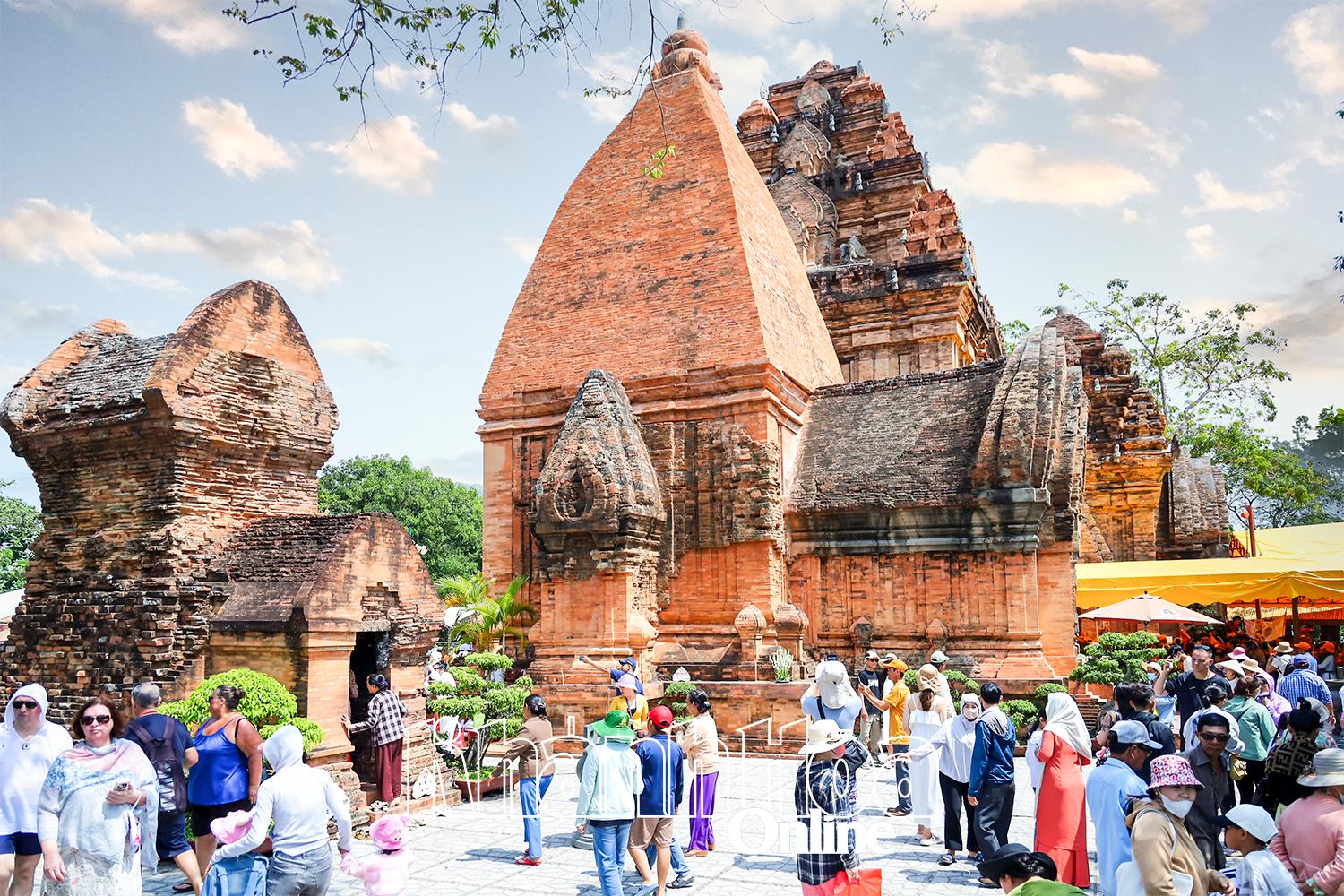
Tourists visiting special national monument Po Nagar Temple (Photo: N.T)
With 36 ethnic groups residing in Khanh Hoa and 32 in Ninh Thuan, these provinces are vibrant tapestries of diverse cultures. Over centuries, the inhabitants in the two provinces have created unique cultural values imbued with profound human spirit. Today, these cultural characteristics stand as an invaluable resource and an essential catalyst for sustainable development. As reported by Nguyen Van Linh, deputy director of Ninh Thuan Provincial Department of Culture, Sports and Tourism (before the merger), Ninh Thuan has paid attention to the preservation and promotion of cultural values of ethnic groups in recent years, including upgrading and widening the northern entrance to the Po Rome Temple; restoring and renovating Pi Nang Tac stone trap relic site; and repairing and improving the fences at Po Klong Garai Temple and Hoa Lai Temple. Since 2021, Ninh Thuan Province has collected and restored over 300 artifacts related to Cham culture and digitized more than 200 artifacts.
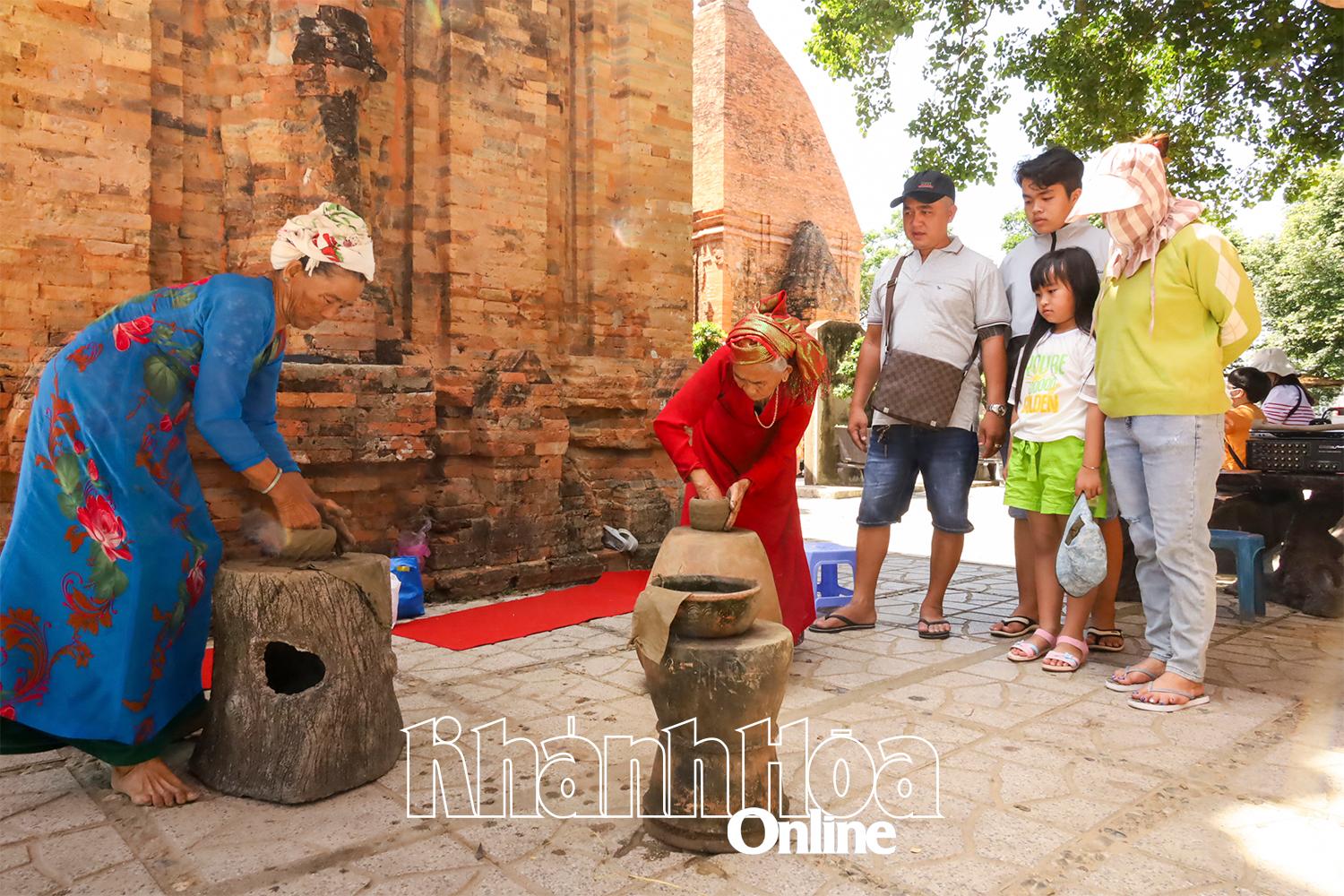
Cham pottery making techniques at special national monument of Po Nagar Temple (Photo: N.T)
According to Le Van Hoa, deputy director of Khanh Hoa Provincial Department of Culture, Sports and Tourism (before the merger), Khanh Hoa has a cultural blend of mountains, plains, and island. Its rich system of classified monuments stands out for its distinctive historical, scientific, architectural, artistic, and aesthetic significance, not just locally but nationally, including Hoa Diem archaeological site, Po Nagar Temple, Dien Khanh Ancient Citadel, Ba Vu Mausoleum, Ninh Hoa Administrative Office, C235 Ship Memorial Site, monuments honoring Scientist Alexandre Yersin, Truong Sa Archipelagos Sovereignty Steles on Song Tu Tay and Nam Yet islands, Khanh Son lithophone collection, etc. Khanh Hoa also organizes many traditional folk festivals year-round; maintains and practices traditional musical forms. Folk knowledge of exploiting and processing Khanh Hoa aloewood and Khanh Hoa salanganes nests were recognized as national intangible cultural heritages.
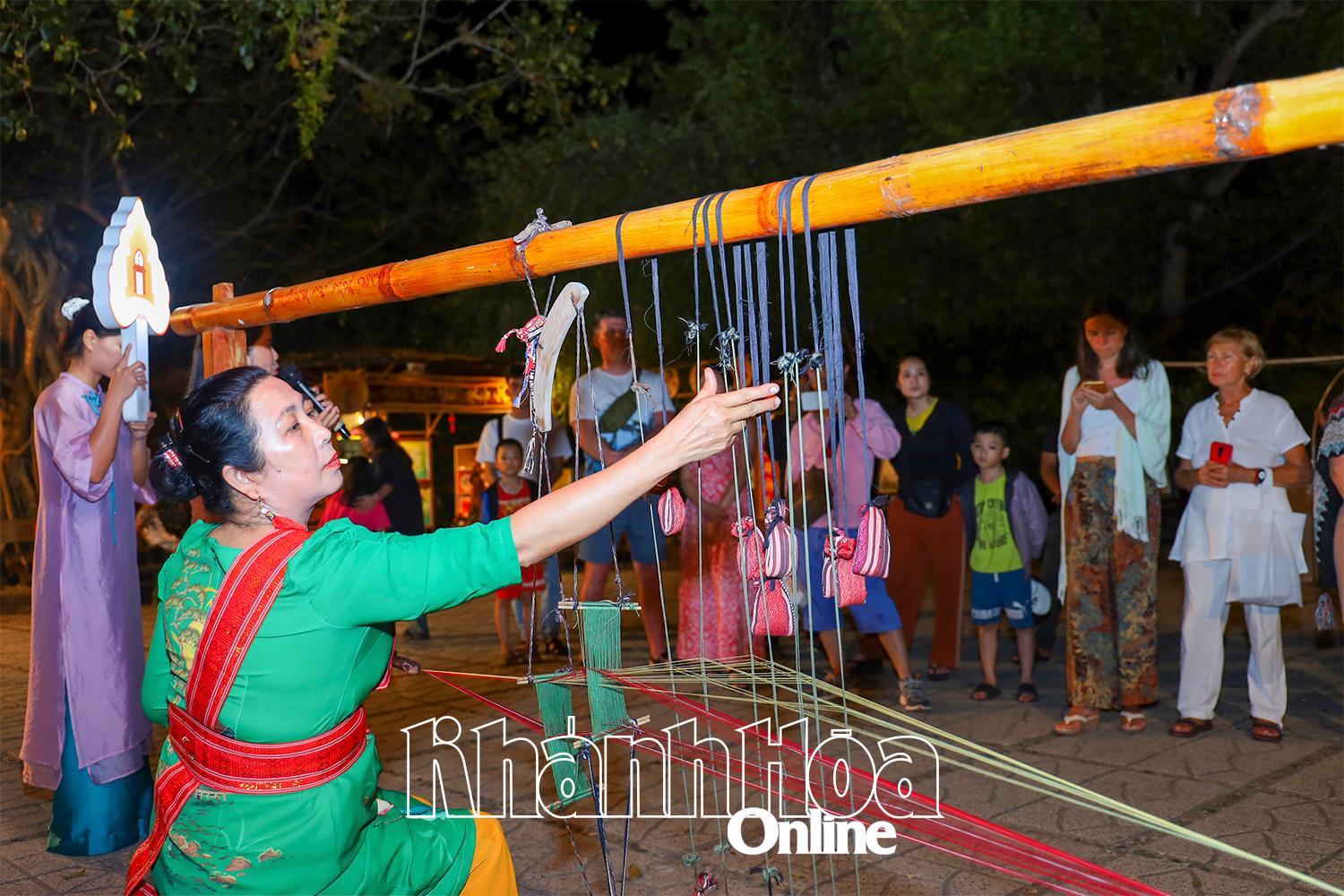
Brocade weaving by Cham people at special national monument of Po Nagar Temple (Photo: N.T)
Opening up new avenues for developing heritage routes
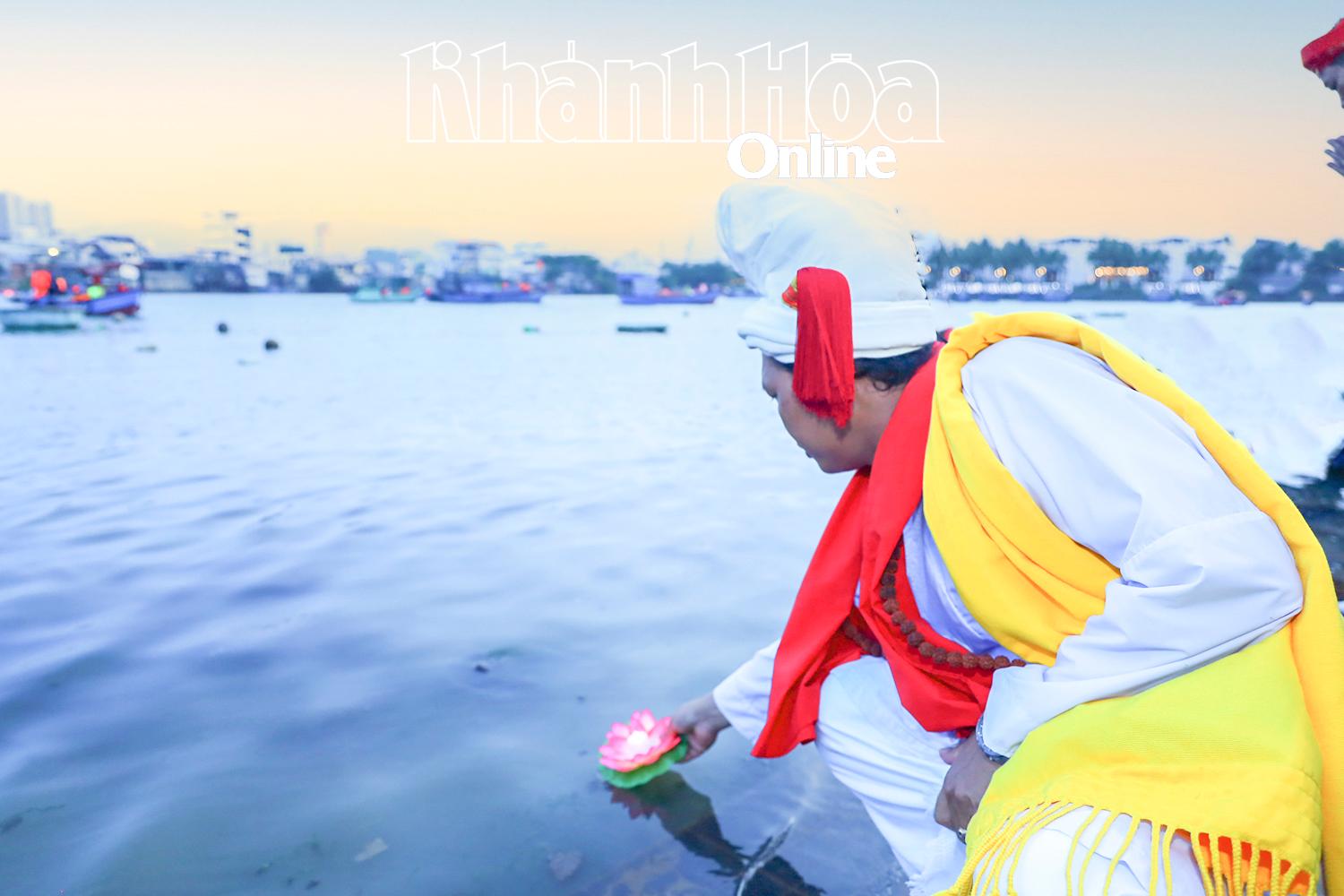
A Cham dignitary releasing flower lanterns on Cai River in Nha Trang (Photo: N.T.)
The recent merger of Khanh Hoa and Ninh Thuan provinces has opened up exciting new avenues for developing heritage routes to explore the land and people of the new Khanh Hoa. For example, Cham cultural heritage road; heritage journey associated with the custom of worshipping the Mother of the land and the belief of worshipping Holy Mother Thien Y A Na; exploring Raglai cultural heritages; experiencing the cultural characteristics of coastal villages along the coastal routes.
With its vast north-south expanse, from Dai Lanh sea area to Ca Na, and stretching inland from the East Sea to the central highland mountainous area, the new Khanh Hoa possesses many potential to integrate its rich cultural heritages into tourism activities.
"Both Khanh Hoa and Ninh Thuan previously paid much attention to preserving traditional cultural values. The people of the two localities have shared close cultural ties and exchanges, clearly demonstrated through Po Nagar Temple Festival. Now, merging together into a single province unlocks new opportunities for traditional cultural values to contribute to local socio-economic development. It needs a focus on promoting the cultural value of ethnic minorities such as the Cham, Raglai, and others," said Le Van Hoa.
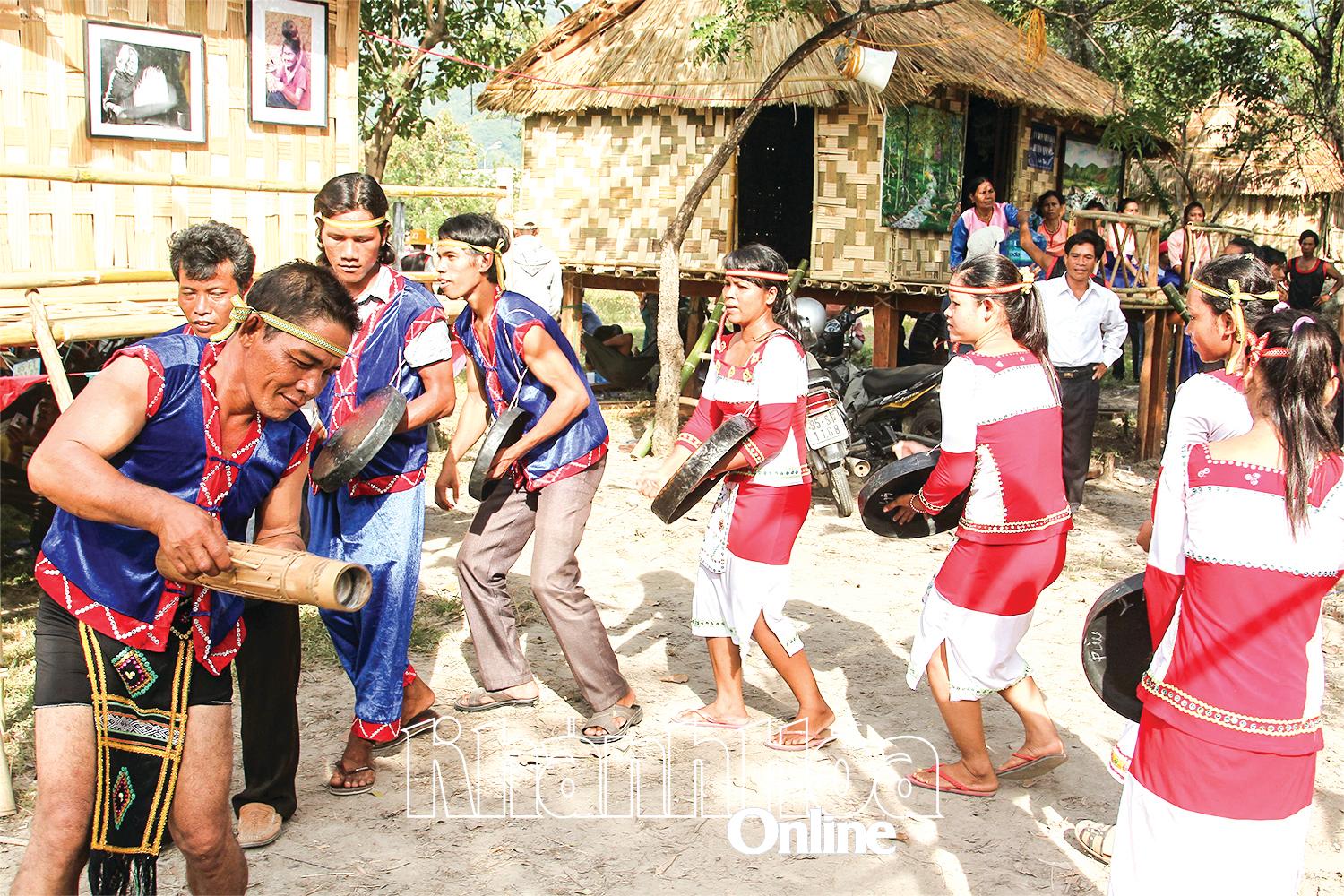
Raglai artisan in Vinh Hai performing traditional musical instruments (Photo: Lam Anh)
Ninh Thuan boasts a wealth of tangible and intangible cultural heritage namely Kate Festival and New Year rituals of the Cham, "new rice" celebration of the Raglai, Bau Truc pottery village, My Nghiep brocade weaving village, Po Klong Garai Temple, and Pi Nang Tac stone trap. Notably, the art of pottery-making of Cham people was inscribed on the List of Intangible Cultural Heritage in Need of Urgent Safeguarding by UNESCO. These cultural heritages have become favorite tourist destinations and products.
Tourists, especially foreign visitors, enjoy coming to the pottery village to learn about local culture and people and to experience making pottery products. During peak season, Bau Truc Cham Pottery Cooperative receives around 1,000 visitors daily, according to Phu Huu Minh Thuan, director Bau Truc Cham Pottery Cooperative.
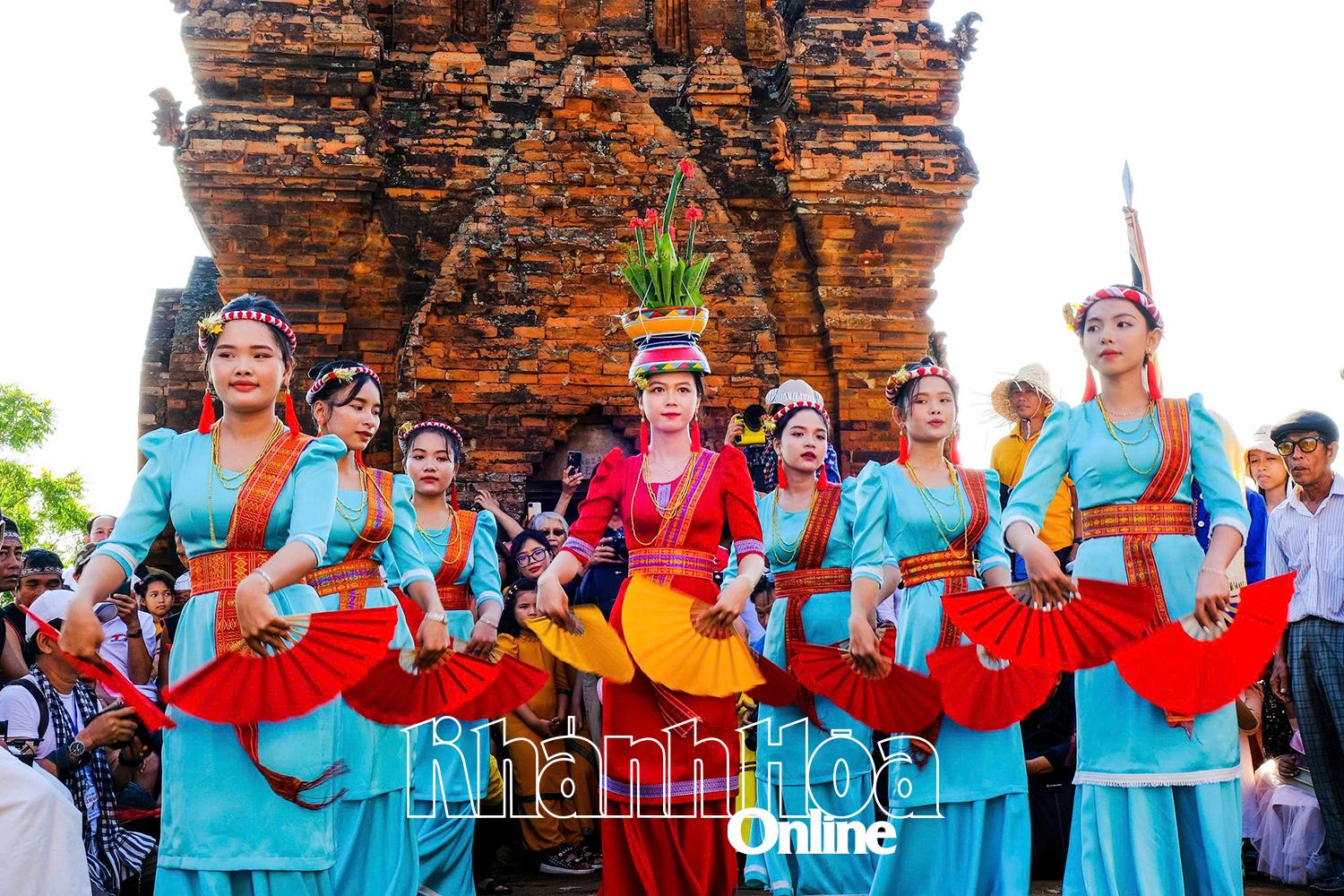
Cham dance at Po Klong Garai Temple (Photo: Tran Duy)
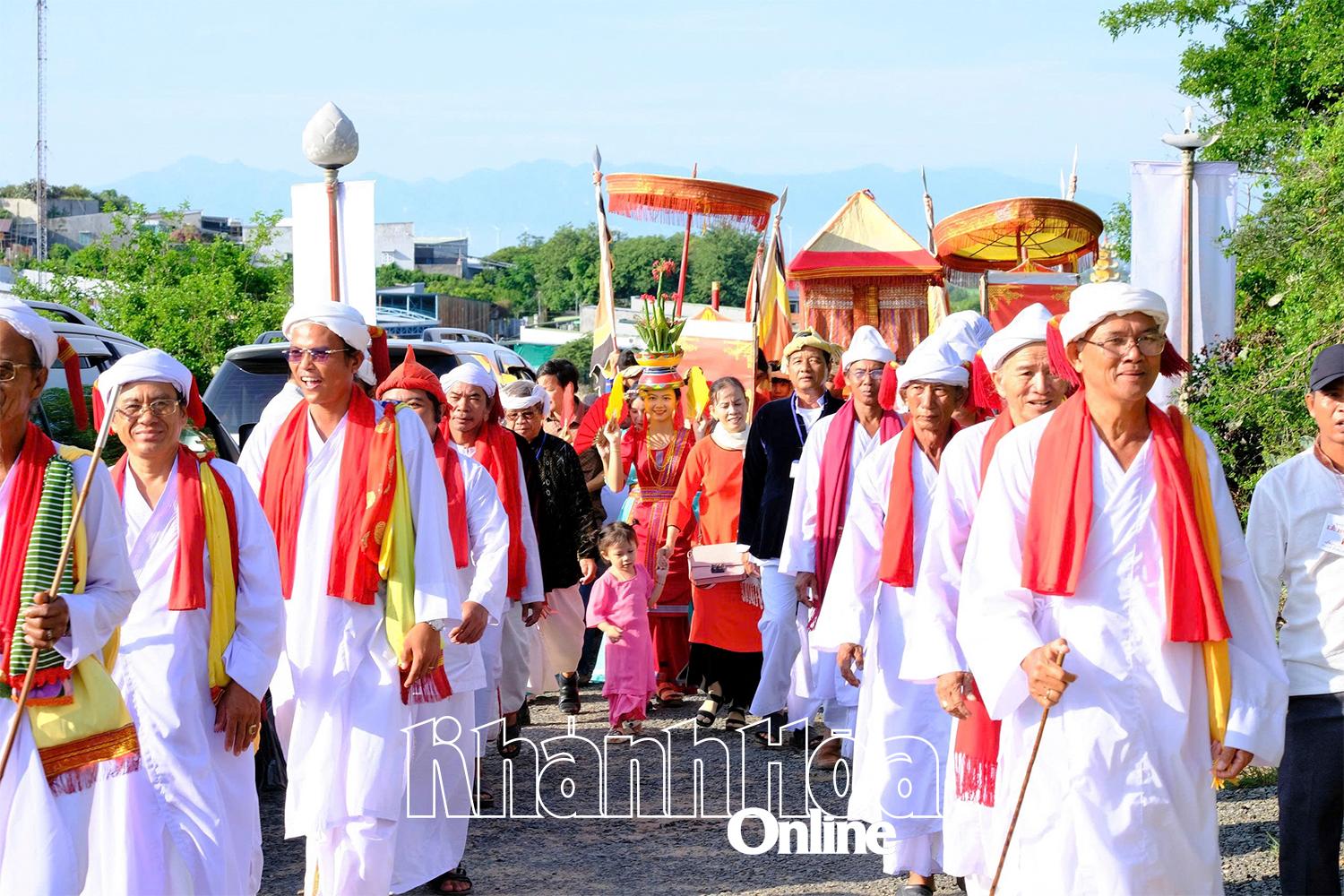
Cham people following Brahmanism attending Kate Festival (Photo: Tran Duy)
In Khanh Hoa (before the merger), Po Nagar Temple was recognized as a special national monument; Po Nagar Temple Festival was also honored as a national intangible cultural heritage and is a famous tourist destination attracting thousands of visitors every day; documents to propose the recognition of the worship of Holy Mother Thien Y A Na as a representative intangible cultural heritage of humanity by UNESCO is also being prepared; Khanh Son lithophone of Raglai people is a national treasure; professions of salanganes nest and aloeswood, and Khanh Hoa Salanganes Nest Festival were also honored as national intangible cultural heritages.
The distinct features and shared cultural heritages between the before-merged Khanh Hoa and Ninh Thuan are opportunities for the new Khanh Hoa to capitalize on.
Giang Dinh - Lam Anh - Translated by H.N